ABG specialise in the design, manufacture, supply and installation of systems for all types of green roofs and biodiverse roofs. Deckdrain is a subsurface drainage layer, predominantly used in intensive roof garden applications where the requirement is to move excess water to the outlets as quickly as possible. The Roofdrain reservoir board is used when there is a requirement to maximise water retention to support vegetation layers (as well as drainage), for example on extensive green or biodiverse roofs.
Green Roofs – Extensive, Intensive & Biodiverse
Typical applications
- Reservoir / drainage boards on Extensive & Biodiverse Roofs
- Roof garden finishes such as soft and hard landscaping materials
Benefits
- Management of storm water ‘at source’
- Habitat replacement and enhancement
- Creation of valuable amenity space
- Significant contribution towards achieving BREEAM and LEED sustainability points
- Protection to the waterproofing system, therefore extending its overall design life
- Quick and easy installation to minimise programme time
- Robust materials to resist installation damage
- The complete system from design to installation and on-going maintenance
Extensive Green Roofs
Extensive Green Roofs are the best known type of green roof and are relatively self-sufficient and low maintenance, often incorporating sedum or wildflower mats. Extensive Green Roofs contribute towards improving air quality, minimising / softening the visual impact of the roof and assist in controlling rain water run-off; as well as enhancing the acoustic and thermal properties of the roof. Extensive Green Roofs, often referred to as living roofs, sedum roofs or wildflower roofs, are the most common type and are relatively self-sufficient. They are not designed or constructed with the intention of being trafficked by pedestrians. Whilst not providing an amenity area, they do contribute to improving air quality and filtering pollutants, reducing the visual impact of the roof and assist in controlling rain water run-off / harvesting in addition to enhancing the acoustic and thermal properties of the roof.
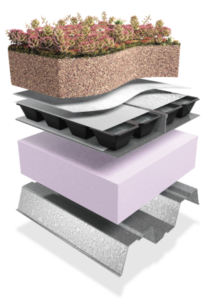
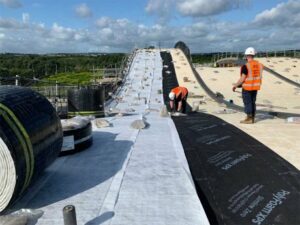
Intensive Green Roofs
Intensive Green Roofs, often referred to as roof gardens, may be landscaped to include trees, lawns, flower beds and paved areas. With an intensive roof the only real limit to its scope is the imagination of the architect and the structure necessary to support it. Many modern developments incorporate landscaped roofs at ground level, for example above basement areas and underground car parks. These are commonly referred to as podium decks. The decked areas themselves create additional amenity space on urban developments.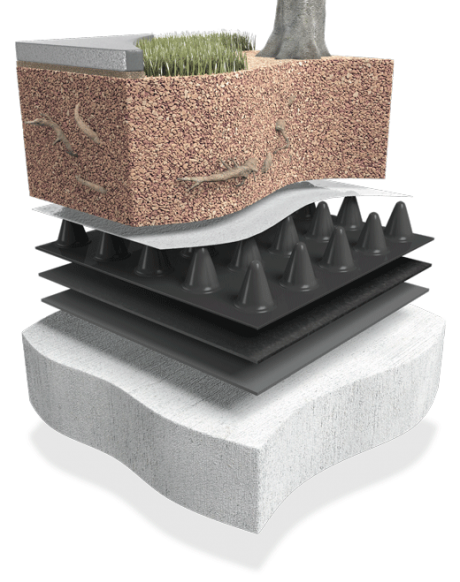
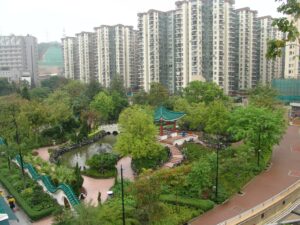
Biodiverse Roofs
Biodiverse Roofs replace and often enhance the local habitat that would otherwise be lost to a new development. Biodiverse roofs are designed to create a natural habitat to support a variety of plants, birds, animals and invertebrates. Biodiverse roofs can contribute significantly towards achieving additional BREEAM points, as well as improving air quality, assisting in controlling rain water run-off and contributing to enhancing the acoustic and thermal properties of the roof. Biodiverse Roofs, sometimes referred to as ‘Brown’ roofs, have become more popular in recent years as part of development in urban areas, especially London. The purpose of a biodiverse roof is to replace and often enhance the habitat that would otherwise be lost to the new development. Designed to be relatively self-sufficient; they are not designed or constructed with the intention of being trafficked by pedestrians, but instead to create a natural habitat to support a variety of plants, birds, animals and invertebrates. They also contribute to achieving additional BREEAM points in the categories of improved air quality, softening the visual impact of the roof and helping to control rain water run-off and harvesting, as well as improving the acoustic and thermal properties of the roof.
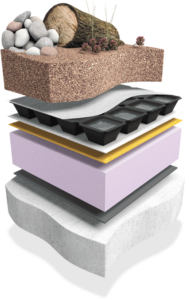
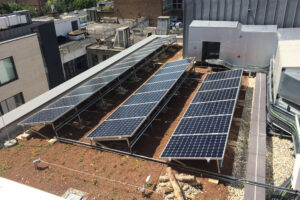
ABG specialise in the design, supply and installation of a wide range of green roofs and biodiverse roof systems. This typically includes everything above the waterproofing system; from attenuation systems, drainage & reservoir layers (e.g. Roofdrain) to insulation, paving, growing media and vegetation layers (such as sedum and wildflower).
Roof types and environmental benefits
In the case of Green Roofs, virtually any type of roof structure can be adapted to accommodate the system components. These include domestic and commercial, both new-build and retro-fit, flat and pitched. The significant benefits of a Green Roof are wide ranging, such as helping to mitigate the effects of climate change, whole-life cost benefits, providing amenity areas, through to maximising BREEAM credits or simply to add a natural aesthetic within an urban environment.
Urbanisation and development of land creates hard impervious surfaces that absorb only 5% of rainfall, leaving the remainder to run-off into both natural and man-made water systems which struggle to cope with the volumes. This has been highlighted in recent flooding events occurring all over the country.
Green roofs can play an important role in mitigating these events, with as much as 95% of rainfall absorbed into the vegetated surface, especially when designed as an integral element of a sustainable urban drainage system, also known as SuDS. SuDS design demands that water falling across a development site is not simply channelled into storm water drains and discharged into the local river. Instead the drainage is designed to mimic that found in nature where water is attenuated, treated and infiltrated through natural processes.
ABG green roof systems have been used extensively across many leading sustainable developments across the UK. As with many sustainability aspects, the final type and design of the green roof system is dependent on the project specific requirements. ABG Geosynthetics offer a complete green and blue roof service; including design installation and on-going maintenance contracts.
Typical Client Profile
- Building Owners & Developers
- Landscape & Main-Build Architects
- Civil, Public Health & Structural Engineers
- Main Contractors, Landscape & Roofing Contractors